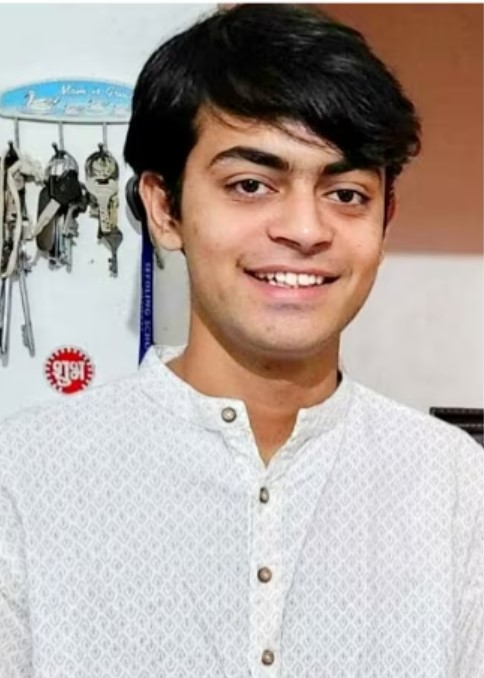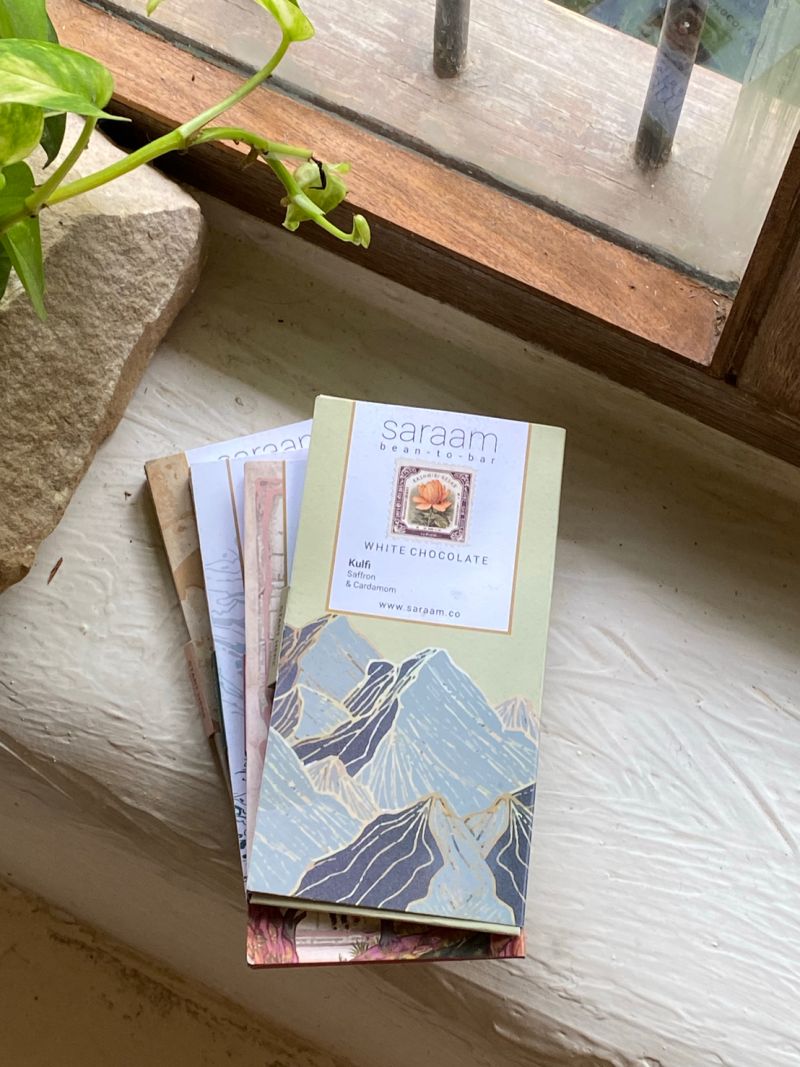(January 12, 2024) Chocolates with exotic fruits, nuts or liquor have caught the fancy of chocolate lovers for decades now. But have you ever had chocolate with falsa (sherbet berry) or sitaphal (custard apple) or kulfi? Homegrown brand, Saraam, the brainchild of a 19-year-old Udaipur resident Digvijay Singh, is bringing indigenous berries and fruits into the conventional world of chocolate making. Started in 2021, Saraam – which produces chocolates from bean to bar – has till now sold two tonnes of chocolate to thousands of people across India.
It was during the pandemic when the world was locked indoors and trying new things, Digvijay too was keen to channelise his energy into something productive. After trying his hand at a lot of things, the then 16-year-old decided to give chocolate-making at home a try. That one step led him to start Saraam, which got its first order in 2021.

Digvijay Singh is the founder of Saraam
‘Out of the box’ mindset
Born and raised in a middle-class family in Udaipur, Digvijay wasn’t academically inclined, instead chose to explore drama, games, and the innovative side of things. “I would always be looking for innovative ideas and things to do that were ‘out of the box’. In school my teachers always supported this innovative side of my brain,” he said in an interview. His innovative side got a push during the pandemic when he explored varied things, and being a chocolate lover himself, he decided to try his hand at chocolate making. “I shared this idea with my cousin Mahaveer Singh and he was enthusiastic to join me. However, back then I did not have a plan of action. I didn’t even know how to make chocolates,” he added.
With YouTube’s help, he learnt the art of chocolate making and started distributing the end result among his friends and family for tasting. While it began as a hobby after getting positive feedback, he decided to turn it into a business. “I started making chocolates in my bedroom, which turned into my studio; day in and day out, I lived and slept in the aroma of chocolates. Even before I got into the business of white labelling, I was teaching myself about cacao beans, roasting, grinding, etc. I was experimenting, doing small batches.” While brainstorming about possible customers, he realised that they received a box of chocolates last year when his dad brought a brand-new car from a showroom. Upon inquiry, he found that the showroom sold 60 cars in a day, and it gave him the idea to contact hotel owners and car showroom owners to sell his chocolates. In 2021, he got his first order of 1000 chocolates and launched his brand Saraam.


Creating desi chocolates
Around the same time, he came across an article that talked about a wide variety of indigenous fruits becoming extinct. “There were mentions of fruits that I had never even heard about and I was very shocked. For us fruits mostly mean the mainstream apples, mangoes, bananas, and grapes,” he said, adding that this gave him the idea of putting these fruits in chocolates.
After doing some research on indigenous fruits like kokam, ice apple et al, he tried them to see which worked best with chocolate. “In the culinary world, we don’t go beyond exotic berries, cherries, and oranges. I have never seen a brand that puts anything else beyond the known few fruits. I wondered if there is a market for such chocolates and decided to take a leap of faith,” he said. Keen to put these fruits on the global map, he put them in his chocolate. Starting with ber (jujube), and he later experimented with saffron and cardamom, bael, amala, jamun, kokam, and rose apple. “The ber chocolate and the white chocolate with saffron seem to be a great hit among people and are one of our best sellers, revealed Digvijay.
View this post on Instagram
A homegrown brand Saraam sources its cacao from Kerala and Tamil Nadu, and fruits from different parts of the country. In just two years, he has turned it into ₹1 crore business, giving indigenous fruits a fresh lease of life.
- Follow Digvijay Singh on LinkedIn




